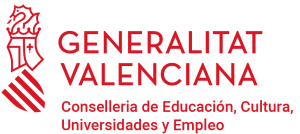Advanced photonics enabled by full control of light beams (UJI·LIGHT)
GROC-UJI
septiembre 1, 2024
Categories
Advanced photonics enabled by full control of light beams (UJI-LIGHT)
Precise control of light beams lies at the heart of advancing photonics technologies. We are experts in optical systems as well as artificial structures for spatial and temporal control of light beams and acoustic waves by digital means. Achieving this control by digital means offers a gateway to revolutionizing numerous fields, from high-speed communications to ultra-precise sensing, quantum computing, advanced imaging, and beyond. It enables the tailoring of light properties with unparalleled precision, fostering innovations that push the boundaries of scientific exploration and technological applications. This quest for complete command over light beams heralds a new era of photonics, promising breakthroughs that redefine how we harness light for diverse applications across various industries and scientific disciplines.
In this project we exploit further our experience in full control of light beams by digital means to develop new widefield structured illumination techniques for nonlinear microscopy and optoacoustics as well as innovative nanomaterial technologies for filamentation, laser-based fabrication, and applications in biomedicine and energy.
Specifically, we will develop new strategies for imaging with structured illumination and integrated detection and apply them on wide-field multiphoton microscopy with adaptive illumination. Our approach will reduce acquisition time and photobleaching by exploiting a wide field technique. Moreover, spatial resolution will be dynamically selected according to the specific sample requirements. To address this challenge, in the project we will progress in new illumination strategies, innovative light sensing methods, and more efficient algorithms for single-pixel imaging. The novel microscopy techniques developed in the project will have the potential to improve resolution and sensitivity in biomedical applications, enabling the visualization of fine structures within cells and tissues, and allowing for the non-invasive study of living organisms in real-time.
We will develop new characterization methods of acoustic cavities based on structured light, for both the excitation and detection. Spatio-temporal maps of these modes will be obtained much faster than with conventional point-by-point measurements, because complex resonant modes of acoustic cavities can be characterized faster selecting the adequate modes of the spatial basis. The optical excitation can be made more efficient also if the pump beam has the shape of the mode. The characterization of acoustic cavities is of paramount importance for modern applications in telecommunications, sensing and imaging, among others. Using structured light for their characterization-excitation will open the door not only to more efficient tools for their understanding but also will allow us to explore other acousto-optic regimes, since we expect that these methods enhance the interaction of light and matter.
We will investigate novel optical effects that may arise when generating the femtosecond filamentation and supercontinuum generation with focused beam under controllable amplitude and phase profiles along the depth of focus. Optical filamentation allows for the propagation of high-intensity light beams over long distances without diffraction, which could revolutionize fields such as remote sensing and atmospheric science. On the other hand, super continuum generation could enhance spectroscopic techniques and imaging capabilities. These technologies together could lead to unprecedented advancements in our ability to manipulate and understand light-matter interactions. Obtained results will be used to improve the generation of nanoparticles by laser fragmentation in liquids.
We will develop new green nanotechnology by obtaining competitive production by laser synthesis and processing of colloids. This will allow us to reduce the overall cost and make promising materials such as multi-element nanoparticles, a unicorn in material science, more accessible and affordable. To produce more cost-effective and efficient nanomaterials, following the principles of green chemistry, will increase the research capacity in many areas, as the nanoparticles can be used in myriad of applications by different research groups. The use of carbon quantum dots as theragnostics is expected to have a significant impact on the generation of scientific-technical knowledge in areas such as cancer research, drug delivery, and tissue engineering.
We will improve the efficiency of specific energy applications by tailoring and optimizing nanofluids and nanoemulsion with new materials and synthesis methods. Our innovative approaches will allow us to develop new heat transfer fluids with optimized properties. Nowadays, relevant parameters can be better controlled, and new materials are available. The development of innovative nanomaterials with improved thermal properties for energy applications, such as heat pipes, thermosyphons, solar collectors, and high heat flux electronic cooling devices, can have a major impact in their efficiency and therefore in energy optimization in a wide range of applications.



Un comentario